Now you are going to evaluate the evidence for quality, relevance, and credibility.
A statement that makes sense in the test frame qualifies as evidence. However, the evidence may not be strong evidence. We will evaluate all the statements identified as evidence, and we will likely find that some statements provide stronger support for the claim than others.
We will be using the article by Frank Bruni from the previous section. For reference, the claim of the article is as follows:
[T]here’s a whole class of animals, fish and plants that are throwing the earth out of balance, and it’s time you turned not just your attention but also your bicuspids and incisors toward them.
We have selected several passages that qualify as evidence. What can we say about the quality, relevance, and credibility of each passage? Does each provide strong support the claim? For each rating, slide the button along the scale and then click to submit your rating. Keep in mind that a rating can be subjective, and when you have chosen the most appropriate rating, you will read why that rating is probably the best choice.
Quality
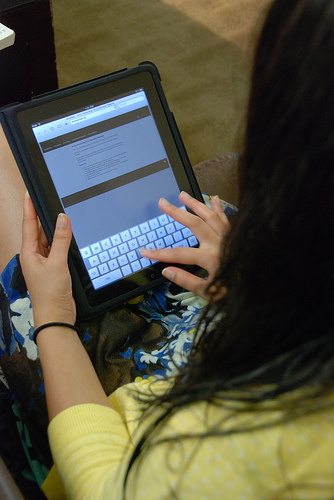
Source: Student with iPad studying, UBC
Library, Flickr
In rating the quality, we will consider the question “Does the author seem to know what he is talking about?” This question is partly a matter of how the author presents the material, but it is also a matter of credentials and authority. Is the author in a position to speak with authority on this topic? This is an important question and means that part of our rating has to come from knowing who the author is and what background the author has that justifies his or her opinions about this topic. Also, if the author is supporting the claim with a quotation from another person, the quality of the claim depends on the quoted person’s authority.
We need to also consider where the argument was published. Was it published online at a site where anyone can post something, or was it published by a reputable site or publication that selects material carefully?
Let’s rate the first statement for quality.
Feral hogs have been known to chew and stomp their way into suburban yards and even onto Army bases.
How would you rate the quality of this evidence? Do you believe Frank Bruni knows what he’s talking about when he refers to damage to yards and Army bases?
In this case, Frank Bruni’s knowledge is not at issue, but Richard Heilbrun’s knowledge is. In the article, Bruni attributes this fact about feral hogs to Heilbrun, who is a biologist with the Texas Parks and Wildlife Department.
Rate the quality of this evidence and submit your response.

Relevance
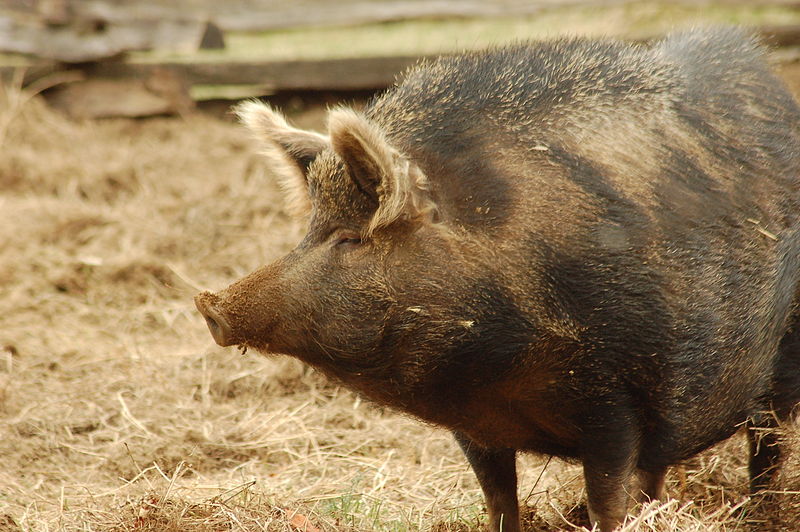
Source: Ossabaw Island Hog, Carly and Art, Wikimedia
Now, let’s think about relevance. For this rating, you have to consider whether and to what extent the evidence connects with the primary claim. Is the connection strong, fairly strong, not so strong, or is it very weak? Read the same statement and then slide the box to your choice.
Feral hogs have been known to chew and stomp their way into suburban yards and even onto Army bases.
Credibility
Finally, you will consider the credibility of evidence. To rate credibility, you have to consider whether or to what extent the evidence is believable. In other words, you will decide whether the evidence stands on its own, without any further research or fact-checking, or whether you need to investigate further before you believe it as true.
For example, if the author uses a quotation from another person to support the claim, the credibility might depend on whether the quotation remains true to its original context. For example, a movie review could be quoted as saying the movie was “startlingly . . . beautiful” when the quotation in context was “This movie is startlingly bad—a beautiful example of how not to make a movie.” This is an exaggerated example, but you need to be cautious about assuming quoted material is used accurately.
Feral hogs have been known to chew and stomp their way into suburban yards and even onto Army bases.
How would you rate the credibility of this evidence? To what extent does the evidence stand on its own, or to what extent would it have to be backed up or researched further?
Choose a rating for the credibility of this evidence and submit your response.
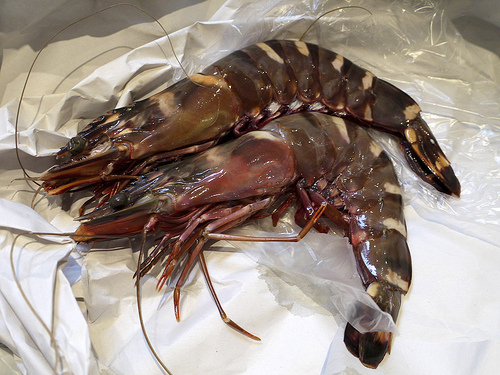
Source: Dan's visit 2011, sally_monster, Flickr
Now, try rating the rest of the statements that qualified as evidence.
They planned to serve it, along with giant Asian tiger prawns and Himalayan blackberries, at a special feast.
How would you rate the quality of this evidence? To what extent do you believe Frank Bruni knows what he’s talking about when he refers to “the special feast” at the restaurant?
Choose a rating for the quality of this evidence and submit your response.
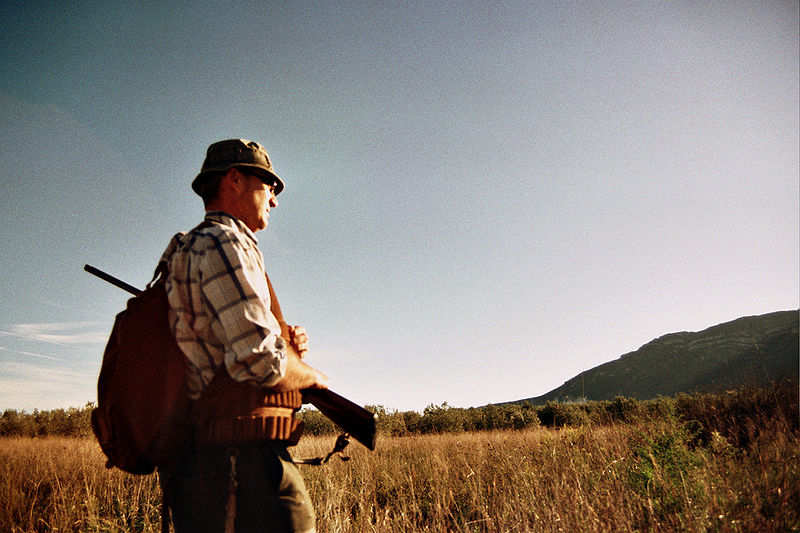
Source José Miguel (cazador de Flickr por Balinera), Blinera, Wikimedia
They planned to serve it, along with giant Asian tiger prawns and Himalayan blackberries, at a special feast.
How would you rate the relevance of this evidence? To what extent does the evidence connect with the claim “We should kill and eat more invasives”?
Choose a rating for the relevance of this evidence and submit your response.

Source: Edmonton Research Park, Edmonton Economic Development
Corporation, Flickr
They planned to serve it, along with giant Asian tiger prawns and Himalayan blackberries, at a special feast.
How would you rate the credibility of this evidence? To what extent does the evidence stand on its own or to what extent would it have to be backed up or researched further?
Choose a rating for the relevance of this evidence and submit your response.

Source: Hef, BBC AlburyWodonga
They just don’t play so well with others, and proliferate ostentatiously.
How would you rate the quality of this evidence? To what extent do you believe Frank Bruni knows what he’s talking about when he refers to “not playing well with others”?
Choose a rating for the relevance of this evidence and submit your response.
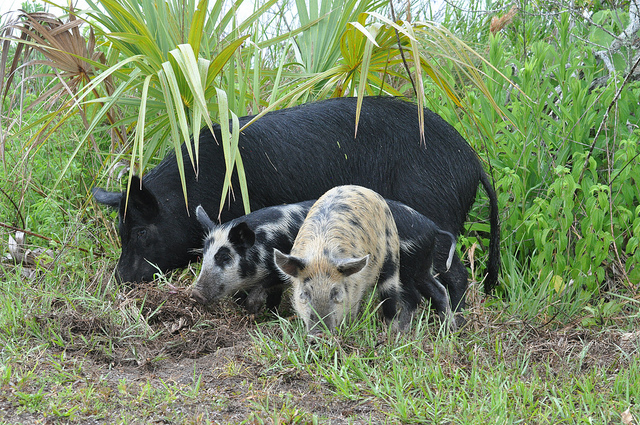
Source: Feral Hog, Florida, Dave Govoni, Flickr
They just don’t play so well with others, and proliferate ostentatiously.
How would you rate the relevance of the same evidence? To what extent does the evidence about invasive species “not playing well with others” connect with the claim, “We should kill and eat more invasives”?
Choose a rating for the relevance of this evidence and submit your response.
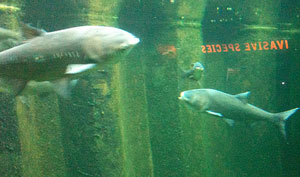
Source: Asian carp=invasive species, jmogs, Flickr
They just don’t play so well with others, and proliferate ostentatiously.
How would you rate the credibility of this evidence? To what extent does the evidence stand on its own or to what extent would it have to be backed up or researched further?
Choose a rating for the relevance of this evidence and submit your response.
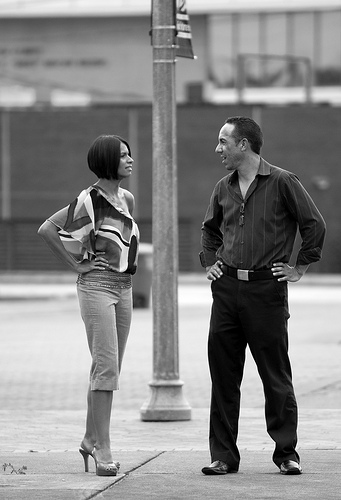
Source: “He said,” she said., Scott*, Flickr
You have been evaluating evidence in support of a claim. If someone writes or speaks in opposition to a claim, the same types of evaluation will apply.
A person opposing a claim can use evidence to discredit the initial evidence used to support the claim. For example, suppose another writer wanted to discredit Bruni’s evidence that several chefs serve dishes based on invasives. The disagreeing writer could use as evidence testimony from the chefs Bruni lists: quotations saying they did not actually serve the dishes Bruni claims.
A person opposing a claim can also use evidence to make and support a counterclaim. Bruni claims that invasives are good to eat, but a person could find evidence—from other restaurant patrons perhaps—that these dishes are not so delicious. This is another way to oppose an argument with evidence: Use it to support a counterclaim.
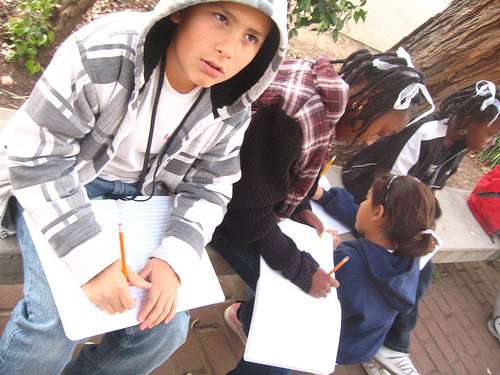
Source: Writers club students at work, Brande Jackson, Flickr